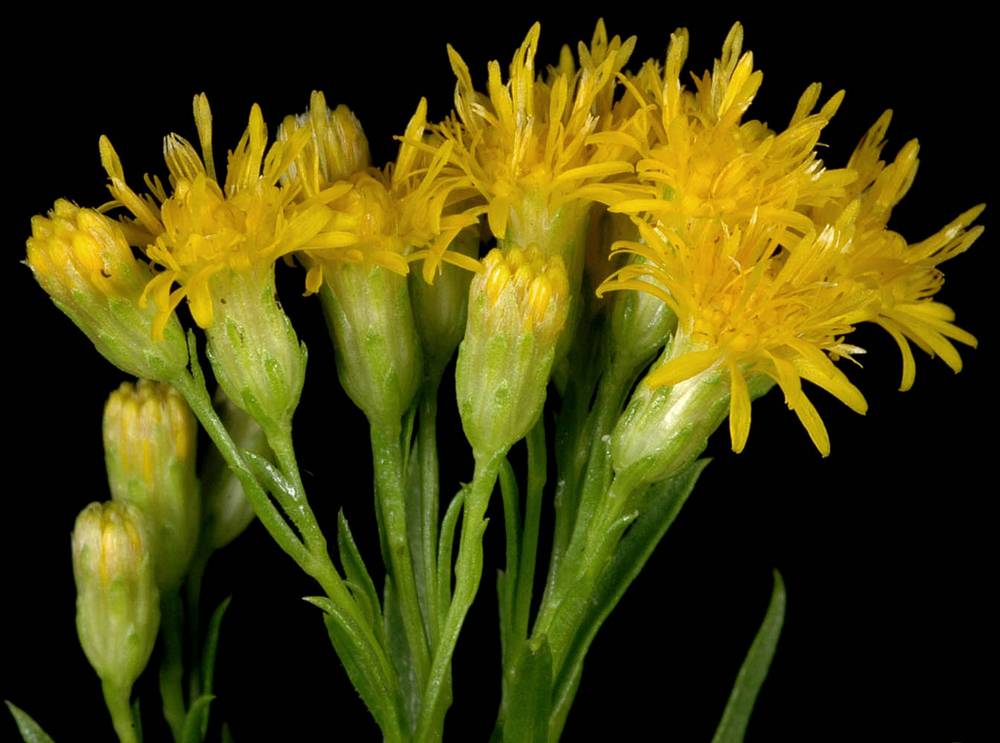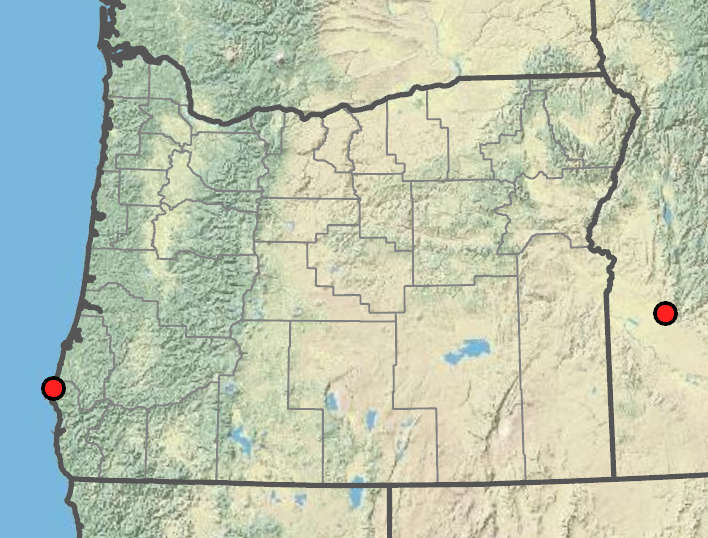Euthamia graminifolia
Euthamia occidentalis
flat-top goldentop
western goldenrod, western goldentop
4–12 cm;
gland-dotted.
3.5–5 mm.
15–25, inconspicuous;
rays 2–2.5 mm.
8–15;
corollas 3–4 mm, equaling involucres.
outer tips obtuse to acute; inner tips acute to acuminate.
0.75–1 mm, pale brown, strigose;
pappus bristles 3–4 mm, white.
=18.
Euthamia graminifolia
Euthamia occidentalis
Moist flats, slopes, open woods, riverbanks, fresh or saline marshes, roadside ditches, deflation plains. Flowering Jul–Oct. 0–1600 m. All ecoregions except Casc. CA, ID, NV, WA; north to British Columbia, northeast to MT, east to NE, southeast NM, south to Mexico. Native.
Euthamia occidentalis is best distinguished from the related E. graminifolia by its overall more elongate inflorescence, the proximal branches being shorter than the distal ones, and not forming a mostly flat-topped unit as in the latter species. However, on less robust individuals having only a few clusters of heads, this difference may not be so clear.
Kenton Chambers
- Local floras:
BC,
OR,
WA
- Local Web sites:
Flora NW,
PNW Herbaria
WildflowerSearch
iNaturalist (observations)
USDA Plants Database
- LBJ Wildflower Center
- SEINet
- Plants of the World Online
- Encyclopedia of Life
- Wikipedia
- Google Image Search
- Local floras:
BC,
CA,
OR,
WA
- Local Web sites:
CalFlora,
CalPhotos,
Flora NW,
PNW Herbaria,
Turner Photog.
WildflowerSearch
iNaturalist (observations)
USDA Plants Database
- LBJ Wildflower Center
- SEINet
- Plants of the World Online
- Encyclopedia of Life
- Wikipedia
- Google Image Search




